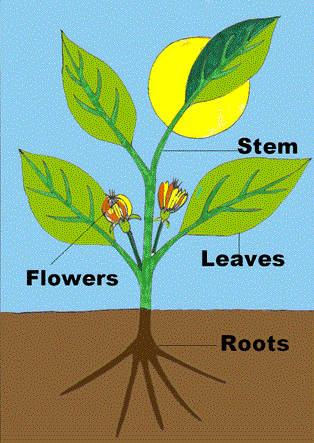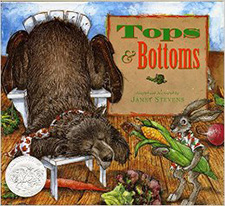Plant Tops and Bottoms
Students identify where fruits and vegetables belong on the MyPlate diagram and describe the major parts of plants—roots, stems, leaves, flowers, and fruits—according to if they are produced on the top or bottom of a plant.
Background
Lesson Activities
Recommended Companion Resources
Credits
Author
Minnesota Agriculture in the Classroom
Acknowledgements
- This lesson was adapted from Oklahoma Agriculture in the Classroom's lesson Plant Parts we Eat.
- The plant parts image is from http://www.zephyrus.co.uk/plantquiz1.html
- Ag facts were taken from www.myplate.gov
Standards
National Content Area Standards
- Social Studies – Economics
- Economics Standard 1 (Grades K-2): Scarcity
- Objective (Grades K-2): Identify what they gain and what they give up when they make choices.
- Economics Standard 2 (Grades K-2): Decision Making
- Objective (Grades K-2): Make effective decisions as consumers, producers, savers, investors, and citizens.
- Economics Standard 1 (Grades K-2): Scarcity
- Health/Nutrition
- Health Standard 1: Comprehend functional health knowledge to enhance health.
- 1.2.2: Identify benefits of practicing health-promoting behaviors.
- Health Standard 1: Comprehend functional health knowledge to enhance health.
- Science
- K-LS1: From Molecules to Organisms: Structures and Processes
- K-LS1-1: Use observations to describe patterns of what plants and animals (including humans) need to survive.
- 1-LS1: From Molecules to Organisms: Structures and Processes
- 1-LS1-1: Use materials to design a solution to a human problem by mimicking how plants and/or animals use their external parts to help them survive, grow, and meet their needs.
- K-LS1: From Molecules to Organisms: Structures and Processes
 Inform students that vegetables and fruits are plants. Draw or show a picture of the common parts of a plant
Inform students that vegetables and fruits are plants. Draw or show a picture of the common parts of a plant
 Show students the book Tops and Bottoms by Janet Stevens. Tell students that this book is about a rabbit and a bear who decided to grow some plants to eat. The title is Tops and Bottoms. Ask the students:
Show students the book Tops and Bottoms by Janet Stevens. Tell students that this book is about a rabbit and a bear who decided to grow some plants to eat. The title is Tops and Bottoms. Ask the students: